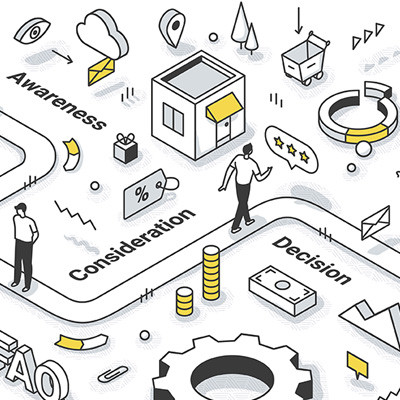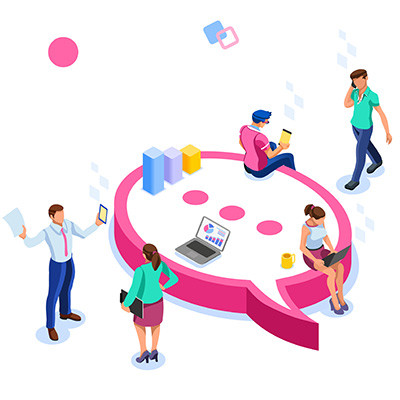When you're struggling to keep your MSP afloat, marketing might feel like a luxury you can't afford. But in today's competitive market, visibility is viability. If prospects can’t find you online or in their inboxes, you simply don’t exist to them. Fortunately, you don’t need a six-figure budget to generate meaningful results. Strategic, time-efficient, and even free tools are available—if you know how to use them effectively, and have a plan.
JoomConnect Blog
Managed service providers face a challenge that should resonate with businesses and organizations of all kinds: they often know their products and services too well, and therefore focus too much on the minutiae—instead of the benefits a product or service brings—when trying to make a sale. While this is never ideal, it can be particularly dangerous for your audience when you’re trying to educate them about cybersecurity, as they’re vulnerable without it.
Therefore, you must position your services not as impressive technological feats, but instead, highlight how they solve your prospect’s problems and assuage their fears. Let’s discuss how you can do so.
While marketing may feel like a fiercely independent endeavor for every business, this is only half true. Sure, you may not want to promote one of your direct competitors… but why not work with another company, in a different industry, to meet both your goals?
This approach is almost a marketing cheat code, the rising tide that raises all ships. Let’s talk about why such partnerships are so valuable and how to take advantage of the marketing advantages for yourself.
Without an understanding of its unique and nuanced client acquisition and retention process, no business—especially a managed IT service provider—is going to find business growth optimally attainable. MSPs especially need to have a structured approach to nurture prospects from the awareness stage of the marketing funnel to become fully-fledged, long-term partners.
One process that greatly helps this endeavor is the use of customer journey mapping.
Alright, let's cut straight to it. You’ve probably heard it, maybe even done it: buying up a ton of domain names packed with your favorite keywords.
BestMarketingAgencyAnytown.com TopWidgetsOnlineStore.com CheapAndBestLocalServices.com
The idea? Point them all to your main website and BOOM! Instant SEO superstardom, right? Watch those rankings climb!
Hold up.
Acquiring new clients—especially as a managed service provider—often commands significant attention and resources. However, a valuable pool of potential revenue could already be in your existing database: prospects who may have previously shown interest but have since become less engaged, or past clients whose contracts have lapsed.
Neglecting these dormant opportunities can be a costly oversight. A well-defined strategy for re-engagement not only offers a more efficient path to revenue generation but also leverages the prior investment made in initial outreach and relationship building.
As an expert in your field, you possess a wealth of expertise and valuable insights that can resonate deeply with your target audience, encouraging them to engage with you…but this may not be enough. You still need your audience to consume your content for it to offer value to your marketing efforts.
The challenge often lies in effectively distributing your content across the various channels your potential clients will use. This is where the strategic art of content repurposing emerges as a powerful ally. Let’s review some best practices for squeezing every drop of value from the content you deliver to your audience.
Many MSPs feel that now that they have their website, the leads will start flowing in. Unfortunately, the reality is that a website is just the first step to lead generation, not the end. MSPs need to realize that marketing their business requires more than just a website; here’s why.
It’s one thing to attract new people to your business initially… it’s quite another to keep their interest over time and cultivate a professional relationship with them. As such, it is important that you look beyond pure engagement… past the sizzle, so to speak… when communicating with your audience.
You also need to consider how you should follow up on your engagement efforts to reach a sale and how to keep these new clients engaged with your services and interacting with you long afterward. Let’s discuss a few strategies you may consider in your attempts to do just that.
Capturing leads is only the first stop. Turning them into clients? That’s where the real challenge lies. Success isn’t just about making a good first impression—it’s about maintaining the momentum. A well-crafted email nurture sequence bridges the gap between the initial interest and long-term commitment, providing a scalable, strategic way to guide leads through the sales funnel.
Cybersecurity is essential for every business. Many decision-makers are now actively seeking cybersecurity solutions, which opens up valuable opportunities for MSPs to provide these critical services. If cybersecurity isn’t yet part of your service offerings or isn’t regularly featured in your marketing, website, and QBRs, now is a great time to consider integrating it to meet evolving client expectations and stay competitive.
Marketing managed IT services, much like marketing any service offering, largely depends on the quality and applicability of your content and the topics it discusses.
As a result, it is essential to produce good content and address the topics your audience is most interested in learning about. Let’s discuss a few things that this could—and really should—entail.
Trust is the bedrock of any successful business relationship. Whether it’s a business owner depending on their employees to do the right thing, a company relying on its vendors to deliver what’s been promised, or a prospect choosing between service providers, trust is the differentiator that turns prospects into loyal customers.
A major point of your website is to attract prospective clients to your business, educate them about your services, and entice them to contact you for more information (or even sign up!). Of course, for this to happen, these prospects must first visit your website, contributing to the all-important metric known as traffic.
This is where your content can prove its worth. Let’s discuss using it to attract as much organic traffic as possible.
Little can be more frustrating than thinking you’re doing everything right, only for your desired outcome to elude you… for instance, if your marketing prospects aren’t being drawn in.
Let’s explore some potential reasons why your prospects aren’t converting and how you can resolve the issues that may be present.
We spend a lot of time discussing how beneficial a blog is to a managed service provider—or any B2B organization, really—as it serves as a simple means of attracting attention from search engines, demonstrating your business’ value, and boosting awareness of what problems you can solve for them. One question remains, however:
How do you get the appropriate eyes on your blog?
What do you do when you are presented with marketing?
Do you skip YouTube ads? Do you throw away any envelope that looks like it’s an XM Radio offer? Do you delete marketing emails?
You are living, breathing proof that most people don’t want to be marketed to.
This might sound strange coming from an MSP Marketing Agency, but it’s the cold, hard truth. Fortunately, MSPs have a really great opportunity to skirt around this fact.
When you’re trying to advertise your MSP services, your content—the materials you share with your audience, like service pages, blogs, deliverables, social media, and others—and its quality will be critical to your success. You need your audience to be informed, engaged, and even excited about what you have to offer.
Of course, for your content to have a chance of inspiring these reactions, you need your audience to read it first.
To develop a strategic marketing approach, it helps to know where your strengths and weaknesses lie and how your opportunities compare to the threats you’ll face. This is the purpose of the SWOT analysis… it allows you to assess your internal and external factors so you can refine and improve your marketing of the managed services you offer.
Let’s explore what goes into a SWOT analysis and how to use it to your advantage, beginning with a breakdown of its most basic parts.
I don’t have to tell you that, for the managed service provider, the sales cycle doesn’t have an end… it kind of just keeps going. While the finish line may seem to be signing a new contract, there’s a lot you still have to do to encourage continued and increased business with your new client. Much of it will depend on your ability to communicate with them.
From your sales team to all those who work with your clients regularly, everyone must remember a few critical practices when communicating with your clients and prospects.






















